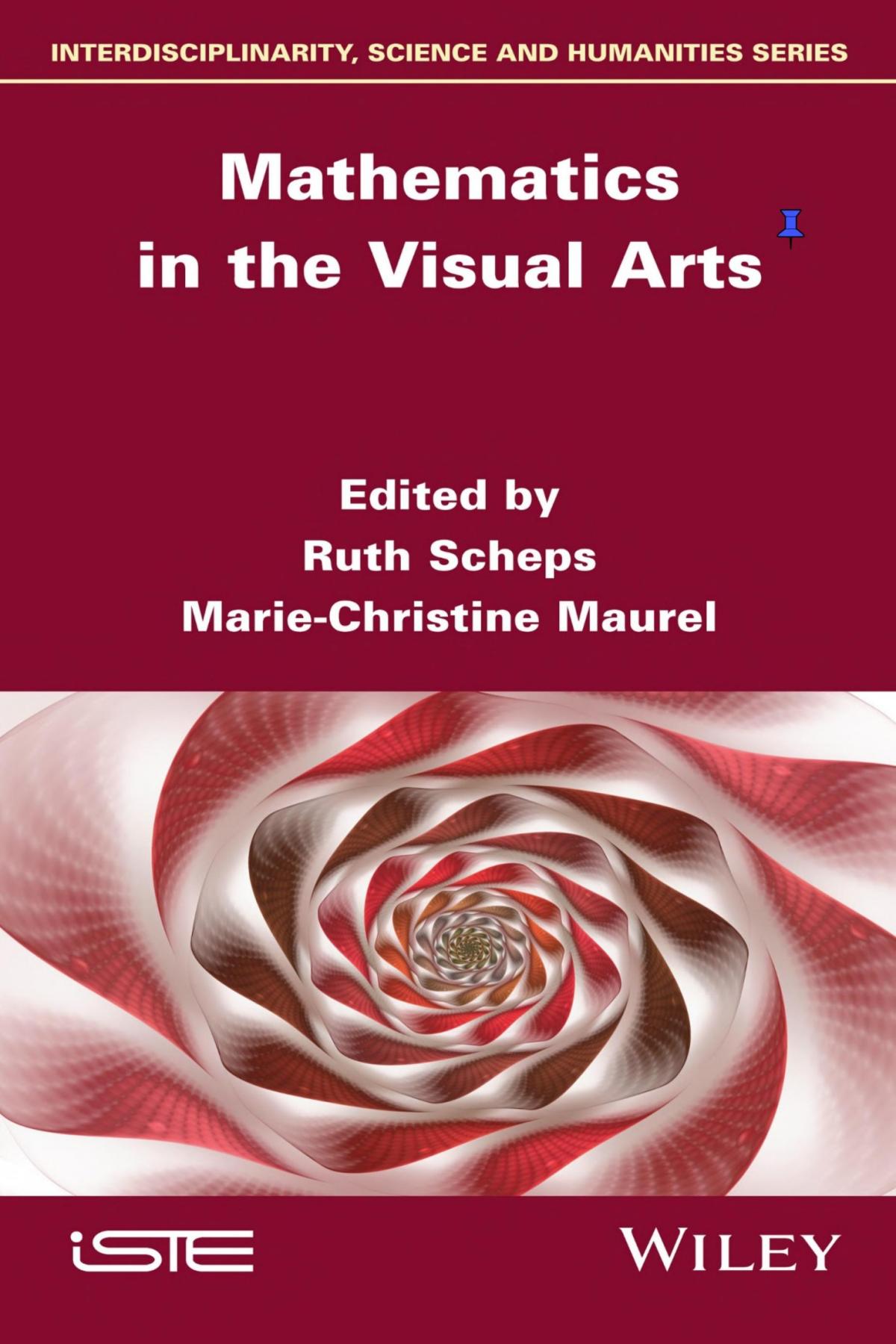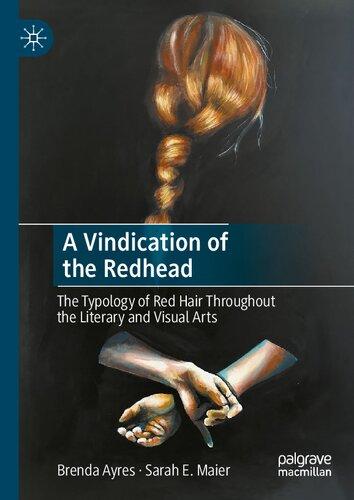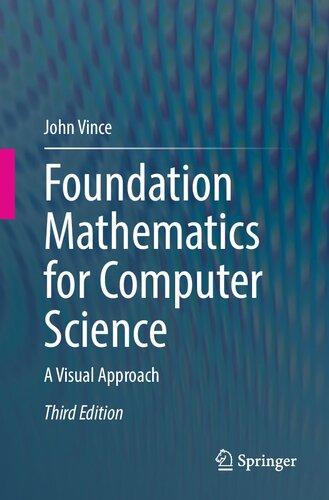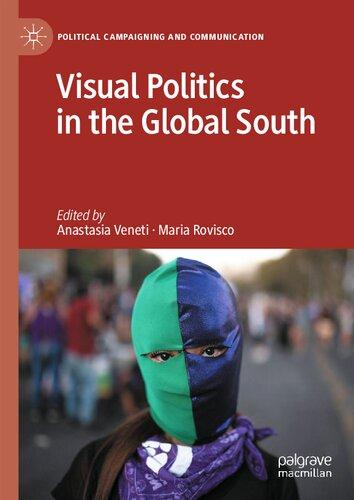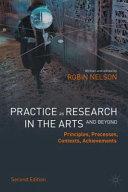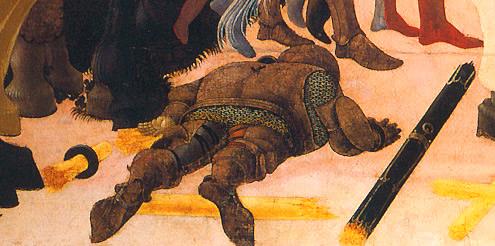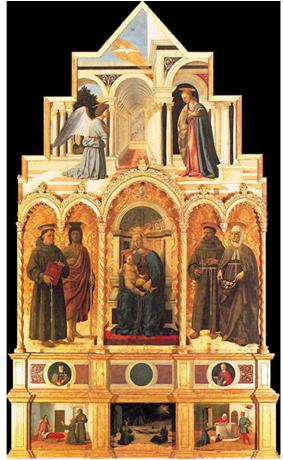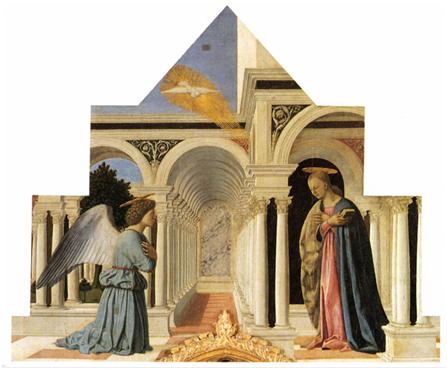Mathematics in the Visual Arts
Edited by
Ruth Scheps
Marie-Christine Maurel
First published 2020 in Great Britain and the United States by ISTE Ltd and John Wiley & Sons, Inc.
Apart from any fair dealing for the purposes of research or private study, or criticism or review, as permitted under the Copyright, Designs and Patents Act 1988, this publication may only be reproduced, stored or transmitted, in any form or by any means, with the prior permission in writing of the publishers, or in the case of reprographic reproduction in accordance with the terms and licenses issued by the CLA. Enquiries concerning reproduction outside these terms should be sent to the publishers at the undermentioned address:
ISTE Ltd
John Wiley & Sons, Inc.
27-37 St George’s Road 111 River Street London SW19 4EU Hoboken, NJ 07030
UK USA
www.iste.co.uk
www.wiley.com
© ISTE Ltd 2020
The rights of Ruth Scheps and Marie-Christine Maurel to be identified as the authors of this work have been asserted by them in accordance with the Copyright, Designs and Patents Act 1988.
Library of Congress Control Number: 2020942150
British Library Cataloguing-in-Publication Data
A CIP record for this book is available from the British Library
ISBN 978-1-78630-681-4
SCHEPS and Marie-Christine MAUREL
Giuseppe LONGO and Sara LONGO
1.1.
2.3.2.
2.4.2.
Chapter 3. Among the Trees: Iterating Geneses of Forms, in Art and Nature
Giuseppe LONGO and Sara LONGO
Chapter 4. The Passion of Flight: From Leonardo da Vinci to Jean Letourneur ..................................
Bruno CHANETZ
4.1. Introduction: from legend to reality
4.2. Leonardo da Vinci and the basis of the theory of flight ..........
4.2.1. Chief engineer to Francis I of France
4.2.2. The flying propeller ............................
4.2.3. Flapping-wing flight ............................
4.2.4. Why can’t man fly like a bird?
4.2.5. The basis of Leonardo da Vinci’s theory of flight ...........
4.3. Pioneers of the air and the first fluid movement visualizations .....
4.3.1. Clément Ader (1841–1925), a distant successor of Leonardo da Vinci, invents the aeroplane ..................
4.3.2. The oil king presides over the surge in flight..............
4.3.3. From Magnus to Lanchester: the difficult gestation of the theory of flight ............................... 71
4.3.4. Gustave Eiffel highlights the suction component of lift force .... 72
4.3.5. Étienne-Jules Marey takes the first images of fluid movement ... 72
4.4. From Henri Werlé to Jean Letourneur, the sculptor of fluid movement .................................. 75
4.4.1. Henri Werlé or “the Master” of ONERA’s water tunnel ....... 75
4.4.2. Jean Letourneur, interpreter of snapshots ................ 77
4.4.3. As the 21st Century dawns, Jean Letourneur gathers momentum .. 79
4.5. Conclusion .................................... 81
4.6. Appendix: additions to the chapter entitled “Why Can’t Man Fly?”, which refers to the article by Marielle Vergès and Kamil Fadel (see footnote 15) ...................................
Chapter 6. Internal Geometry of “Salvator Mundi” (The “Cook Version”, Attributed to Leonardo da Vinci) .........
Jean-Pierre CRETTEZ
6.1. Introduction ....................................
6.2. Distinctive features of the works of Leonardo da Vinci
6.3. Presentation of the Salvator Mundi, Cook version
6.4. Investigating the compositional mesh
6.5. Compositional format
6.6. Elements of the internal geometry of the Salvator Mundi, Cook version ......................................
6.7. A detailed look at the ellipses of the head of the Salvator Mundi ....
6.8. Visual consonance ................................
6.9. Properties of the type 1 ellipse ........................
6.10. Other applications of the type 1 ellipse
6.11. The decoration of two intersecting bands of the stole
6.12. The internal geometry of the Salvator Mundi (Ganay version)
6.13. Conclusion
6.14.
Chapter 7. Internal Geometry of a Night Scene by Georges de La Tour: “The Apparition of the Angel to St. Joseph” .......
Jean-Pierre CRETTEZ
7.1. Introduction
7.2. Methodology
7.3. Distinctive features of the work of Georges de La Tour
7.4. Internal geometry of The Appearance of the Angel to St. Joseph
7.5. The search for the compositional mesh
7.6. Compositional format ..............................
7.6.1. Position of the two protagonists’ heads
7.7. The compositional architecture ........................
7.8. The ellipse of light ................................
7.9. Curved or elliptical forms ...........................
7.10. Internal geometry of the two protagonists’ heads
8.1.
8.2.
8.3.
Introduction
The presence of mathematics in the arts has been plain since at least Pythagoras’ time. This applies as much to music (rhythm, scales and chords) as to all the visual arts, which are addressed in this book. The visual arts are also related – more and more closely – to other sciences (material, life and cultural). However, in order to get to the very roots of the connections between art and science, we felt it appropriate to choose “the queen of sciences”.
Within the mathematical sciences themselves, geometry, born from the vision of space (geometry: “measuring the Earth”), is, in this respect, the first. In the words of Max Bill: “The primary element of any plastic work is geometry, in terms of relationships between positions in the plane or the space”1. Confronted with the forms they saw in nature, the early geometrists tried to understand them by drawing them in an idealized way, that is, by modeling them. In the artists’ hands, these basic forms became the means of expression with universal scope.
Before characterizing this unquestionable presence of mathematics in the works of art in more detail, we should first note that mathematics, by its very nature, has a tendency towards plastic representations: mathematical objects, created for the purpose of translating scientific abstractions into visual terms.
Introduction written by Ruth SCHEPS and Marie-Christine MAUREL
1 Bill, M. (1949). The mathematical way of thinking in the visual art of our time. Werk, 3.
Visual artists of modernity have often taken their inspiration from mathematical models, as if to delegate to them the task of speaking the unspeakable of art. Think of M.C. Escher, who exploited the riches of tiles from the hyperbolic plane, or Salvador Dali, who represented the crucified Jesus on a hypercube2, or the constructivist sculptors Henry Moore, Naum Gabo and Barbara Hepworth.
A certain parallelism between mathematical and artistic approaches has often been argued – and equally often rebutted. Let us therefore say at the outset what, in our view, should be excluded, and that is the quest for beauty for its own sake. If mathematics happens to be “beautiful”, this is actually a consequence of its elegance, in other words, its simplicity. As for art, it renounced beauty as a determining criterion long ago.
What seems of greater interest in this respect is the search for truth. This is, without question, the ambition of mathematics, which is wholly intellectual in nature and based on axioms that are posited as true or on accepted assumptions. This ambition is more intuitive in art: in a picture, truth is not expressed in a “thinking way”; it can be simultaneously striking and inaccessible.
The best established point of convergence between the artistic and mathematical approaches (as with other sciences) is that they turn the subject, whatever it may be, into a heuristic form; that is, they make it thoughtprovoking. Moving away from a materialistic concept of painting, can mathematics help us to discover the “spiritual software” of a work of art?
Let us turn to the contemporary aspects of the “marriage” between mathematics and the visual arts.
Since the emergence of non-Euclidean geometries and new branches of physics (quantum and relativistic) that point to the importance of chance, or even uncertainty, in the material world, we have seen a gradual erasure of the boundaries between the logical understanding of phenomena and the intuitive approach. Max Bill’s Mathematical Art represents a culmination of this convergence.
In the wake of conceptual art, digital art has driven the dematerialization of artwork still further. Now that a painting is nothing but a signal, devoid of
2 Dali, S., Crucifixion (Corpus Hypercubus), oil on canvas, 194.3 x 123.8 cm, 1954. The Metropolitan Museum of Art, New York.
any meaning of its own, the work’s significance has shifted upstream, in other words, to its production processes, the algorithms or the thought processes that generated it.
But there is more: having gradually freed itself from the material (in favor of light, or other forms of energy or information and communication), the work of art tends nowadays to emancipate itself from its creator, with their assent, and win its autonomy. Randomness thus plays a role, not only in the decision-making processes of the artist, but within the work itself. Art appears to have accepted its own artificialization. It remains to be seen whether this will lead to its disappearance as a human construct, or to its reconfiguration as total artificial art.
Taking note of the fact that geometry, in all its forms, is the mathematical discipline that has contributed most to the visual arts, this book sets out to show the fruitfulness of their relationships throughout all eras.
Giuseppe Longo and Sara Longo, in their article “Infinity of God and Space of Men in Painting”, evoke the contribution of the geometric perspective to Renaissance painting. From the mid-14th Century, armed with this new tool, artist-theologians were able to organize the space of men and symbolize their finitude, in the face of God’s infinite act.
Another contribution of geometry to painting is highlighted by JeanPierre Crettez in his two articles on “internal geometry” – a concept created by the author to show how classical painters such as Leonardo da Vinci and Georges de La Tour used geometry (invisible but revealed through its structural mesh) to ensure the coherence and harmony of their pictorial space.
Since the early 20th Century, geometry has had a plurality of forms: nonEuclidean geometry, catastrophe theory, algorithmic geometry, fractal theory, etc. In her article “Geometry and the Life of Forms”, Ruth Scheps explains how these various geometric currents have inspired geometric abstract artists – from suprematism to digital art, via optical art, kinetic art, conceptual art and minimalism.
A special case of artistic inspiration, derived from geometric and natural forms, is provided by Giuseppe Longo and Sara Longo in their article “Among the Trees: Iterating Geneses of Forms, in Art and Nature”, which
presents the fractal geometric structure as a source of inspiration for the “Komorebi” project (an untranslatable Japanese word that refers to the effect of sunlight through the foliage).
At the interface of art and science, or belonging to both, scientific drawings and photography have also given rise to artistic works, as illustrated by the article by Bruno Chanetz, “The Passion of Flight: from Leonardo da Vinci to Jean Letourneur”, and by Jean Letourneur himself, “Sculptor of Fluid Movement”, whose drawings and sculptures draw their inspiration from visualizations created by an engineer at ONERA.
Finally, the most contemporary tools for experimental visual art are, no doubt, provided by advances in computer modeling and simulation. Sophie Lavaud, in her article “Emergilience, an Art Research Project”, explains her project: exploring the conditions necessary for the emergence, through self-organization, of “infinite dynamic picture-systems” composed of collective and global shapes and phenomena.
Infinity of God and Space of Men in Painting, Conditions of Possibility for
the Scientific Revolution1
1.1. A brief introduction to infinity
There is no space in Greek geometry. By drawing lines, using a ruler and a compass as we would say today, measurements are made and figures are constructed, with no mathematical “infinite container” – a plane or a space –“behind” them. Symmetries – rotations and translations – provide proof in the finite. And potential infinity (apeiron, without limit, without bounds) is constructed by using extensions and iterations: a segment can be extended with no finite limit in a straight line (the second axiom), eis apeiron. If we take a set of prime numbers, we can construct a new prime which is greater than each of the elements in that set (Euclid’s theorem on the infinitude of primes). An extension and an endless iteration of the finite, from the act of drawing a line to the construction of integers. Time is infinite in this sense, never present in its entirety in our minds. Infinity is not beyond that in which there is nothing, Aristotle tells us in his Physics, that in the beyond there is always something. It is a becoming, a potentiality.
Chapter written by Giuseppe LONGO and Sara LONGO
1 This chapter is a significantly expanded and revised version of an article published in ISTE OpenScience, ISTE Ltd, London, 2019, and, in a very early form, in French in Le formalisme en action : aspects mathématiques et philosophiques, J. Benoist and T. Paul (eds), Hermann, Paris, 2013.
Mathematics in the Visual Arts, First Edition. Edited by Ruth Scheps and Marie-Christine Maurel.
© ISTE Ltd 2020. Published by ISTE Ltd and John Wiley & Sons, Inc.
Paolo Zellini2 explains that the Aristotelian distinction between this mathematical infinity, which must be constructed step by step, potential, and the infinity which is “already” there, in actuality, and is all-encompassing, was to resurface in medieval metaphysical debate. God is an all-enveloping, all-inclusive infinity, beyond which nothing is a given. However, this concept of actual infinity is not an easy matter. For Aristotelians, it was embodied in negation, as in Aristotle, and God cannot have a negative attribute. However, St. Thomas convinced people by excluding the existence of this kind of infinity in actuality, except as an attribute of God and God alone. And this concept of actual infinity was to grow in strength and acquire a positive identity in people’s minds. This reached the point where, in 1277, the Bishop of Paris, Etienne Templier, decreed that actual infinity was a positive attribute of God and His Creation. God, when He so wishes, introduces actual infinity into the world; for example, by bestowing Full and Infinite Grace upon a finite being, a woman, Mary – and for those who disagreed, burning at stake awaited. There is no doubt that this uncompromising “axiomatic posture” helped stabilize the concept of actual infinity.
Zellini quite rightly stressed the significance of this debate for the birth of a cosmology of infinity, that was to find fulfillment, first mystical and then scientific, in the infinite Universe and “gli infiniti mondi” of Nicolas of Cusa (1401–1464) and Giordano Bruno (1548–1600)
1.2. Infinity in painting and the invention of mathematical space
The concept of actual infinity was clarified in a metaphysical debate, circumscribing infinity as a single “entity” and forcing the mind to envisage it in its totality. How would the “entity” pass into mathematics, where it will be turned into a specific object of discourse, and indeed an element of proof?
The transition came about through the invention of perspective (prospettiva) in Italian Renaissance painting3
2 Zellini, P. (2005). A Brief History of Infinity. Penguin, New York (in Italian: Adelphi, Roma, 1980).
3 At the time there was intense debate in Italy over what name should be given to this new technique: perspettiva, “seeing through”, which was to pass into other languages, or, more accurately, the choice of a viewpoint, a prospettiva, as we will see.
The problem of depicting the scenes where narrative figures were to be placed became a central issue for painters from the late 13th Century onwards. Giottesque “boxes” (dolls’ houses with one wall missing, exposed to the viewer) are scenes whose purpose is to contain the historia and to render its theological teachings intelligible. In a contiguous arrangement, the spatial scenes (boxes, landscape, hills) punctuate the narrative – we will come back to this later.

The geometrical perspective which Filippo Brunelleschi experimented with in 1417, and which was defined in 1435 by Leon Battista Alberti, is a revolution: not only does it construct a single compositional space (and thus, with a few rare exceptions, a unified narrative) but, above all, it is the result of a construction where man is the source of every measurement (see Alberti, De Pictura, I, 19) and where actual infinity, the point of convergence of the orthogonal lines at the bottom of the painting, is contained, enclosed within the representational framework. Since the second half of the last century, in response to Erwin Panofsky’s inaugural article (Perspective as Symbolic Form, 1925), art historians including Pierre Francastel, Hubert Damisch and Louis Marin from the École des Hautes Etudes en Sciences Sociales, in Paris, have highlighted the importance of this pictorial revolution.
Figure 1.1. Giotto di Bondone, Life of St. Francis, fresco, around 1290. Assisi, Basilica of St. Francis
According to Erwin Panofsky’s foundational essay, published in Germany in 1927 but translated into English in 1991, the representation of a space by the geometry of orthogonal lines has led to the development of “the concept of an infinity, an infinity not only prefigured in God, but indeed actually embodied in empirical reality”4. Erwin Panofsky noted that Ambrogio Lorenzetti’s Annunciation (below), painted a century before Alberti formulated his theory, is the first geometrical construction where the receding lines converge not towards a single point but towards a single vertical axis (in the picture plane, the column separating Gabriel from Mary). Daniel Arasse went further, extending this insight to the quite remarkable upsurge in complex geometric constructions, in scenes of the Annunciation to Mary.
His argument is very relevant to our discussion topic: the special affinity that existed in the 15th Century between Annunciation and perspective is due to the fact that in Christian history, the moment at which the infinite enters into the finite is the moment when the son of God miraculously appears in human flesh, through the meeting of God and the Madonna, full of Grace. Daniel Arasse discusses this idea by highlighting what he calls a “theological-pictorial” problem, which toys with the effects and the effectiveness of images: with a back and forth between depth and surface, the paradoxes internal to the spatial structures of certain Annunciations demonstrate the impossibility of depicting God within the space of human geometry. This research in painting could be closely linked to a conception of the divine that is not excluded, as Panofsky said, but present in the picture.
To support his argument, Arasse makes particular reference to a sermon delivered by St. Bernardine of Siena in 1427: the Annunciation is the moment when “immensity comes into measure [ ], the unfigurable into figure, the uncircumscribable into place, the invisible into vision […], length into brevity, width into narrowness, height into lowness”5 … all these conceptual paradoxes have given rise to spatial paradoxes from painters. Daniel Arasse also highlights how the most ingenious perspectivists enjoy toying with the rules of geometric perspective in order to show the paradox of the infinite entering into the finite.
4 Panofsky, E. Perspective as Symbolic Form. Zone Books, New York, p. 65.
5 St. Bernardine of Siena (1745). De triplici Christi nativitate. In Opera Omnia, Venice, IV, p. 3, cited in San Bernardino de Siena, Pagine Scelte, Milan, 1950, p. 54.

In this Annunciation, there is a column, often a symbol of Christ, very substantial at floor level and becoming fainter towards the top where it overlays and obscures the receding axis, which we could say, at infinity, is an explicit reference to God. Here, in 1344, we have an extraordinary innovation: a rigorously drawn projective space. And then, through the effect of the geometry of the floor that goes from (wo)man to God, a new scene unfolds: God has His place here, hidden, far away at infinity, but present in the story that is being told. The Madonna, too, has a new human depth: her solid, three-dimensional body ushers in the expression of an emerging humanism. Perspective introduces God as the actual limit, at infinity, thus as the limit of a space that everything encompasses, including human spaces that replenish themselves. The very first pictures painted in prospettiva were annunciations, unique scenes where infinite meets finite6. Then, with
6 Longo, S. (2013). “L’Annonciation en Italie. Enjeux méthodologiques et historiographiques, autour du colloque florentin de 1986”, “‘La perspective de l’Annonciation’, présentation d’une étude de Daniel Arasse” and “L’intervalle sacré”. In Studiolo, revue de l’Académie de France à Rome, X, pp. 24–32 and pp. 75–93.
Figure 1.2. Ambrogio Lorenzetti, Annunciation, tempera on wood, Siena, Pinacoteca Nazionale, 1344
Piero della Francesca, this metaphysical dissertation in paint went on to also become a technique, without necessarily losing its religious essence. Piero’s book De Prospectiva Pingendi (1475) is actually a treatise on “practical” projective geometry, and was the most significant mathematical text of his time, as Vasari wrote.
Hence, prospettiva allows the painter to arrange the space of men and objects and to choose a viewpoint. The choice of where to place a vanishing point determines the spectator’s viewpoint; it proposes/imposes a line of sight – for instance, viewing, humbly from below, Antonello da Messina’s Saint Sebastian the Martyr (1476).
Figure 1.3. Antonello da Messina, St. Sebastian, tempera on wood transposed onto canvas, Dresden, Gemäldegalerie, 1476
And now this metaphysical and religious cosmology became a geometry of space: God, the stars and men found a new place in it, arranged in a unifying and changeable viewpoint. We have come a long way from the absolutes outside of space and the world of Byzantine mosaics, if we think back to Ravenna. This (re)arrangement of space, this new skill of choosing a viewpoint, this technology that soon spread across Europe, helped Copernicus (1473–1543) to “see” the solar system from “the Sun’s viewpoint”, the new prospettiva of modern science7
In fact, the Renaissance invention of perspective involved the simultaneous invention of an explicit spatial structure, a viewpoint, and even a “Copernican revolution” of this new and relativizing point, which we will come back to in the sciences. It was the consequence of a diametrical change: the viewer is no longer obliged to move in accordance with a system of contiguously arranged scenes, he is the fixed point from which a continuous narrative starts out. This change is very significant, because it puts man in a different position in the space of action, or even in the Universe: Aristotelian physical space is the sum total of different scenes, it has no overall structure and gives form to a pictorial space, conceived as the sum of the scenes of the historia. The ultimate expression of this idea was the spatial boxes of Giotto, as we have mentioned, and his fellow artists of the Trecento: “little houses”, or rooms, are inhabited by protagonists in various different, and often independent, narratives. The monofocal construction, theorized by Alberti in 1435, 90 years after Lorenzetti’s early experiments, radically changed this method. Turning pictorial space into one unified body, albeit articulated into scenes (its limbs), gave this space the specific feature of being constructed from a single mathematical point, proposed by the painter, which also identifies the eye of the motionless viewer, in relation to whom everything is arranged.
The idea of a chosen, unique, immobile viewpoint was a theoretical leap, an epistemological mutation8. Painting thinks of the picture’s hitherto closed space, as being open to the narrative “almost to infinity”9. As we have been
7 This refers to a comment made in van Frassen, B.C. (1970). An Introduction to the Philosophy of Space and Time. Random House, New York.
8 Michael Baxandall made a very subtle connection between Alberti’s conception of painting and the oratorical art of rhetoric. See Baxandall, M. (1971). Giotto and the orators, 13401450. Clarendon Press.
9 Alberti, L.B. On Painting, I, 19.
taught by Hubert Damisch and Daniel Arasse, among others, paintings think. Linear perspective, which is Alberti’s costruzione leggittima, is a geometrical abstraction that unifies the scenes of the narrative and, as such, constitutes a theoretical break with earlier techniques. And so, we have mathematical space.
1.3. Geometrical optics and the subject in projective space
Painters and scientists of the 15th Century seem to have been familiar with geometrical optics, invented by Euclid and developed by the major Arabic-language schools of algebra and geometry. Some authors compare the references Alberti makes to the “old school”, who made a careful study of reflections on surfaces and the convergences of rays of light10. This was of course an analysis of lines in the finite, sometimes extended “eis apeiron”, without limit, as in Euclid, thus potentially towards infinity. For instance, in the calculation of angles subtending an object that is moving away from the eye. Ibn al-Haytham (Egypt, 11th Century) was one of the great masters of these calculations. But actual infinity, a difficult metaphysical judgment, was not to be found here, this projective point is at the asymptotic limit which structures space and strength and imposes a viewpoint for every observer.
Geometrical optics, however, played a massive part in the work of painters from the 15th Century onwards; it introduced a new geometric rigor and augmented the figurative repertoire so as to better represent distance and arrange figures in projective space. But it was not at the origin of the metaphysical turning point, a century earlier, that led to the pictorial invention of space that is being discussed here.
On the subject of this new technical rigor, in a rarely cited article, Daniel Arasse takes the example of Brunelleschi’s tavoletta, regarded as the first example of rigorous geometry in the prospettiva construction: he describes the actions of the Florentine engineer/architect when verifying his perspective representation of the Baptistry and suggests to the reader that the verification process, as written by Antonio Manetti in his biography of Brunelleschi, could be reversed.
10 Simon, G. (2001). Optique et perspective: Ptolemy, Alhazen, Alberti. Revue d’histoire des sciences, 54(3)325–350.
Brunelleschi drew the Baptistry as seen from the entrance to Santa Maria del Fiore. He then made a hole on a level with a vanishing point and turned the tablet with the drawing on back to front. He placed his eye opposite the hole and looked at the real-life Baptistry. Then, he raised a mirror to the level of the drawing and looked at the reflection; by lowering the mirror and raising it again, he verified the conformity between what he saw before him and the lines of his drawing11.
Figure 1.4. Brunelleschi’s experiment with linear perspective, looking through the tablet and mirror
Daniel Arasse imagines the subject by first looking at himself in the mirror, then raising his arm with the back-to-front tavoletta between himself and the mirror, and placing one eye to the hole pierced in the tablet, to see the drawing. The reflection of the man looking at himself is hidden by the reflection of the Baptistry, and then, when lowering the mirror, by the sight of the real-life building. “… The theoretical model of painting perspective consists in hiding the image of myself in the mirror, substituting it with the image of all that is visible”12
This notion of reversing the steps when carrying out a verification process elevated by art history to the status of cognitive paradigm, leads us to
11 Manetti, A. (1887). Opere Historiche. G. Milanesi, Florence, pp. 83–85.
12 Arasse, D. (1983). La peinture de la Renaissance italienne et les perspectives du Moi. In Image et signification. La Documentation française, Paris, p. 237.
compare the story of Brunelleschi’s verification to the other founding myth of painting, the myth of Narcissus, whose face is annihilated in the spring. But in our case, the subject comes back. As the viewpoint is always chosen by the painter, the choice of where to place the horizon is recommended as the first thing to decide, by Alberti. Thus, from the 1450s onwards, a horizon placed especially low or high reflects a precise awareness of the presence of a viewer, who will be struck by the effect of having a bird’s eye view or a worm’s eye view. In choosing the point of projection, the supposed position of the viewer determines the painting space. “What is of particular note there, is that the image does not exist without the person who created it”13 The modern notion of subject, painter, viewer, has been invented14.
These inventions can also be found under the brush of the other great “perspecteur”, Andrea Mantegna, this time in a painting of a corpse. Not just any corpse, but that of the Redeemer, immediately after being taken down from the Cross, and not in his grave but on a marble surface. Through a sublime perspective foreshortening, we are placed right beside the feet of Christ and we look at Him not da sotto in su, but from feet to head. Mantegna’s choice was bold, to the point where the Dead Christ is traditionally considered as the artistic legacy of the Paduan.
For a fuller understanding of the picture, let us start by looking at the studies. Among pictures recently attributed to Mantegna and published, we can see the research of a perspecteur, with a fondness for foreshortened corporeal representations, as in the preliminary drawings for the Dead Christ: the drawing is a study of Christ’s body seen from the feet and then from the head, but always at a slight angle to the plane of representation, and not at 90 degrees, as in the final painting.
During the same years, Paolo Uccello used the same technique. When his wife used to call for him at night, Vasari tells us, Paolo would join her in bed murmuring: “Oh! this perspective is such a lovely thing!” … The elongated bodies in the Battle of San Romano give the battleground all its depth.
13 Arasse, D., La peinture de la Renaissance italienne et les perspectives du Moi. op. cit., p. 238.
14 Longo, S. (2014). Voir et savoirs dans la théorie de l’art de Daniel Arasse. PhD Thesis in Art History, to appear, Éditions de la Sorbonne, Paris, 2021.
Figure 1.5. Andrea Mantegna, Study for the Dead Christ, pen and brown wash on paper, 1460–1465. Milan, private collection
Figure 1.6. Paolo Uccello, Battle of San Romano, detail, 1456, tempera on wood. London, National Gallery
But the invention we noted in the Dead Christ is unique: the viewpoint chosen is that of the penitent, the faithful worshipper bending over the stigmata – perhaps the viewpoint of Mary Magdalene. Her vial of ointment is placed on the marble near Christ’s head.
The head is resting on a cushion, also in light pink marble, so as to not detract from the mineral chromaticism of the whole of the painting (body, sheet and bed, everything is in stone). On the left, three figures mourn the corpse. At the bottom is where we are. We look at this body, and the painter has taken great care to show all of it: the soles of the feet and the backs of the hands torn by the nails, the lateral malleoli and the fibula and then, on the torso, the navel, the stigmata on the right side and the chest. Finally, on the face, the chin, mouth, nose, eyes, eyebrows, forehead and hair, everything is perfectly visible and identifiable.
A rigorous geometric perspective foreshortening, derived from a simple calculation from a viewpoint, would have never permitted that. The forehead would have been hidden by the nose, the nose by the chin, the torso by the stomach, and above all, the feet would have been immensely bigger. The linearity of the perspective and the geometrical optics are deliberately overridden by the painter’s decision. We can say, to put it positively, that the viewpoint is not exactly level with the feet, that we are slightly elevated and that the head of Christ is also raised, on the marble cushion. However, the impression of foreshortening is certainly there, we are at Christ’s feet, but our worship extends to his whole body, hence it is the whole body that the artist must make visible. There is no realism in this, as confirmed by the arms, which are connected to the upper body by strange and impossible muscles starting from beneath the chest. Anatomically, the body is monstrous; pictorially, it is perfect in its “monstration”. In brief, perspective, in appearance and in principle, is so rigorous, is in no way absolute, and is less objective. It is a relative through which the observing subject fashions the form.
Figure 1.7. Andrea Mantegna, The Dead Christ, tempera on canvas, Milan, Pinacoteca di Brera, 1490
A final example, another Annunciation, painted by Piero della Francesca around 1470, for the Tertiary Sisters of the Order of St. Anthony of Perugia.
1.8. Piero della Francesca, Polyptych of Perugia, 1470, Perugia, National Gallery of Umbria
The Annunciation that decorates the cyma of this large altarpiece is painted in a space that is not closed by the frame. Perspective makes it possible for Piero to give the illusion that what we see, which is cut into by the imposing stepped frame, is only one part of a much larger space, that of a
Figure
Figure 1.9. Polyptych of Perugia, upper register (see Figure 1.8)
cloister. Unlike in the middle register, where the golden background gives spatial unity but little depth, and in the lower register, a traditional predella where each scénette has its own closed, unified perspectival narrative space, the upper register shows an infinitely large space, to the sides (each architectural element exceeds the frame) and also in depth (the succession of columns is impressive). Gabriel is kneeling before Mary, looking up at her. Mary has her hands crossed and her head slightly bowed in a sign of acceptance. She is not in front of the architecture, as Gabriel is, but under a protrusion from the building. The reader should observe the clusters of columns to the right and left of the figure of Mary: they are the only elements of the painting placed in the foreground. The Virgin is directly opposite Gabriel, at the same distance from us, as we can see from their feet being on the same white strip of paving, behind the plinths. What is the visual effect of this arrangement of the figures in the architecture?

Less than half a century ago, art historians with a special interest in perspective noted a paradox within the great geometric complexity of this painting. From Gabriel’s viewpoint, Mary is invisible. She is hidden by the
Figure 1.10. De Martone, art. cit.
second cluster of columns that is not visible to us, as viewers, because we are at almost 90 degrees to the row … but this cluster must be there, since opposite Mary, up above, two arches can be clearly distinguished. Thus, she is bowing her head to the columns, not to Gabriel. Thomas Martone, who raised and discussed this contrivance, used the wonderful expression “trompe-l’intelligence”15 . Piero della Francesca, artist–geometrist par excellence, toys with the paradoxes arising out of a dual viewpoint, ours and that of the angel, not to trick our eye, but to trick our mind.
We, the faithful in prayer, see Gabriel and Mary face to face and we contemplate their dialogue, their spiritual exchange, which become our prayers, our faith. We have to believe that they see each other in order to speak to each other. But geometrically, rationally, Piero tells us (in secret) the pair cannot see each other, because they see each other in their minds, their dialogue is mute and blind. Theologically, between them there is the divine, the miracle in all its invisibility which is not explicable rationally, much less geometrically, but is made possible by the subtlety of the geometric arrangement of space. Because painting, in the Quattrocento, was not conceived as a simple reproduction of “everything seen under the sun”, whose “purpose is to please” (Poussin, 1665, letter to his friend Frédéric de Chambray). It is also the stuff of the invisible, of faith in a mystery that lines and colors are not there to explain but, through interplays of visibility, to show that there are mysteries16. The paradox emerges from applying geometry so rigorously to make it possible to place the protagonists in a situation chosen theologically, and to do this in a way far removed from naïve realism. Driven by this paradox, the viewer has a dual role, visual and spiritual; geometric objectivity is employed in the glances between the protagonists, in the viewpoints, in what is shown to the viewer and what is hidden17.
15 Martone, T. (1985). Piero della Francesca e la prospettiva dell’intelletto. In Piero teorico dell’arte. Gangemi, pp. 173–185. See also Jean Petitot, Morphologie et Esthétique, Maisonneuve et Larose, Paris, 2004, pp. 75–84.
16 On the issue of mysteries made visible and hidden, see the comments by Marin, L. (1989). Opacité de la peinture : essais sur la représentation au Quattrocento. Usher, Paris.
17 We might here go back to Van Frassen’s comment about Copernicus in the previous note: taking the Sun’s perspective to observe the solar system and the game of hide and seek of the planets and their satellites is not “realistic”; more deeply, it is the invention of a scientific perspective.
This interplay between relative and objective, anchored in the relationship with the space of the observing/knowing subject, in making a subjective viewpoint explicit, in order for objectivity to be constructed, was to be at the heart of modern science through to the present day, as we will try to show. The pictorial form of the infinite in actuality, contributed to the invention of this space and of the scientific notion. Let us now explore various articulations, mathematical and practical, of this infinity and these spaces.
1.4. The limit of time, calculus and algebra
First, let us come back to the issue of infinity. Ever since Aristotle, time has been regarded as a paradigmatic potential infinity, because it is never present in its entirety in our minds. What “temporal” meaning could its projective limit have18? On the other hand, it is interesting to see, in mathematics, the appearance of an early symbolic expression of actual infinity, founded in religious debate, which came about via painting –explicitly mathematized painting, notably by Piero della Francesca, who as we have mentioned, was an artist and a geometrist. This makes sense when we consider that the conceptual construction and geometry of an infinite space is not necessarily based on an actual infinite: Descartes’ space can very well be conceived as a potential infinite, an endless extension from its point of origin. The actual infinite, however, is inherent in projective construction, especially when it is employed for the two-dimensional representation of a three-dimensional space. And vanishing point objectifies the actual infinite, by showing it, at the back of the painting. In short, in the Renaissance, as a result of the central role of painting in the arts and the construction of knowledge (think of Leonardo da Vinci’s drawings) –including theological knowledge – three-dimensional space was conceived mathematically, drawing it first; to make it intelligible (visible) on a plane, it was therefore necessary to project it, thus showing a (symbolic) form of this
18 In an attempt to make relativity consistent with the Big Bang theory, some physicists conceive the origin of time as an asymptotic inverse limit, that is, the inverse of the temporal order created by the expansion of the universe. In fact, Noether’s theorems (energy conservation as the invariant of the equations of motion through temporal translations) are at the heart of the relativistic turning point and are incompatible with an origin of time; see Bailly, F. and Longo, G. (2011). Mathematics and Natural Sciences: The Physical Singularity of Life. Imperial College Press, London (translation and revision of the book for Hermann, Paris, 2006).
infinity of God, in actuality, that was so clearly defined by the Christian philosophers of the Middle Ages.
Two centuries later, Desargues made this projective synthesis between infinity and geometry fully mathematical. In mathematical analysis, Newton and Leibniz proposed the concepts of derivative and integral as operations with infinite limit, at the heart of differential calculus. In the 19th Century, Cantor subsequently objectified actual infinity, through a syntax, associating it to a new, and this time scriptural, symbol, ω. By algebraic manipulations, he generated from that symbol an infinity of infinites, ω+1, ω+2 … and invented an arithmetic of infinites, ω+ω, … ωxω = ω 2 , ω 3 , … ω ω …, the transfinite ordinals. Nothing stabilizes a concept better than a mathematical praxis, the technical use of a sign for the concept, whose meaning will be enriched by this very usage. The debate on the infinity of God also interested Cantor, a deeply religious man: God is (at) the limit of all these limits, beyond transfinites19.
It should be noted that, in all these cases, mathematical infinity gives us a tool for the intelligibility of the world. In Renaissance painting, projective geometry, this theological decision and this asymptotic gesture, to infinity, arranges man’s space for a fuller humanity, in its finitude. Likewise, from the spaces of Descartes and Desargues, to the actual infinity of Newton and Leibniz, mathematical physics gave intelligibility to movement in the finite, around us, through the infinites of infinitesimal calculus. In logic, ever since Gentzen (1935), the ordinal analysis of proof has been based on Cantor’s arithmetic of infinites20. Moreover, Galileo had already explained to Simplicius, in the analysis of a mathematical sphere resting on a plane by a single point (nonsense, said Simplicius), that mathematics is a science with infinite limit21. The finite makes a fetish of iteration and has become its prisoner22. The finitist-formalist, who rejects infinity, declaring it to be
19 Charaud, N. (2019). Georg Cantor, Infini et inconscient, Spartacus IDH [Online]. Available: https://spartacus-idh.com/collections/nouvelles-visions-des-sciences.html#.
20 In fact, infinity comes into proof as an infinity between algebra and geometry, that of the “orderliness” of integers, Longo, G. (2011). Reflections on Concrete Incompleteness, Philosophia Mathematica, 19(3), 255–280 (articles (co-)authored by G. Longo can be downloaded at https://www.di.ens.fr/users/longo/download.html).
21 A story that is a starting point for Gargani, A. (1975). It senza sapere Fondamenti Einaudi, Turin.
22 Châtelet, G. (1993). Les enjeux du mobile. Seuil, Paris.
outside the world and outside of physics, does not grasp the human meaning, for our designs and our praxes of intelligence, and this act of placing the infinite inside the world, while organizing this same world through language, geometry and writing, including asymptotic gestures.
An epistemology of this organizational concept can only be historical: a history of ideas and constitutive praxes, a critical history, to be kept under constant review.
1.5. Rational spaces: from trade to physics
Thus, the birth of modern science came about through the construction of an infinite space of possibilities, a space and a time of every possible phenomenon and all possible physical dynamics. The choice of origin of Cartesian coordinates provides the frame of reference in which all possible trajectories can be described and in which physics can be constructed, after Galileo. In fact, Descartes’ analytical approach posits the origin and measurement of space and gives it a prospettiva, from which we are able to set the upper and lower bounds and understand the world. As an invariant of diverse mathematical representations, this space of all curves, of all trajectories, is doubtlessly made possible by a plurality of acts of experience. Therefore, in the 16th Century, the mapping of new geographic explorations, joint to the Arabic optic23, contributed to a greater clarification of the geometric perspective, as a new framework for the world. In particular, Francesco Maurolico (1494–1575) developed a remarkable synthesis of the ideas of Islam’s great mathematicians and algebraists, one aspect of the fertile marriage of Western and Eastern traditions in mathematics24.
In this context, the rich, innovative Galilean relationship between experiment and theory, and physical theorizing itself, is intended to render
23 Kheirandish, E. (1998). The Manāẓir Tradition through Persian Sources. Les sciences dans le monde iranien, Vesel, Ž. et al. (eds). Tehran, repr. 2004, pp. 125–45. Kheirandish, E. (ed. and tr.) (1999). The Arabic Version of Euclid’s Optics: Kitāb Uqlīdis fī ikhtilāf al-manāẓir, 2 vol., New York.
24 Islami. A. and Longo, G. (2017). Marriages of Mathematics and Physics: A challenge for Biology. In The Necessary Western Conjunction to the Eastern Philosophy of Exploring the Nature of Mind and Life, K. Matsuno et al. (eds). Special Issue, Progress in Biophysics and Molecular Biology, Vol. 131, pp. 179–192.
